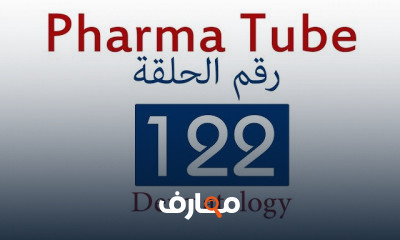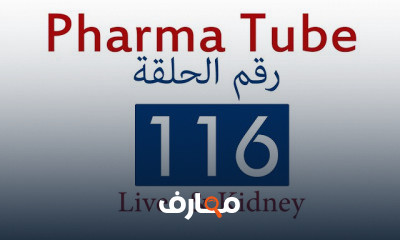شرح المحاضرة السابعة الجزء التاني مادة كيمياء العقاقير الفرقة الثانية أ د كاميليا ابو السعود | [معتمد]
دورة فارماكوكينيتك صيدلة الفرقة الثانية
شارك الآن استفساراتك مع اعضاء دورة فارماكوكينيتك صيدلة الفرقة الثانية اضغط هنا
سجل الآن
قائمة الدروس | 44 درس
التعليقات
دورات ذات صلة
دورة فارماكوكينيتك صيدلة الفرقة الثانية اون لاين مجانية What is Steady-State Concentration in Pharmacokinetics?
Steady-state concentration (Css) occurs when the amount of a drug being absorbed is the same amount that’s being cleared from the body when the drug is given continuously or repeatedly. Steady-state concentration is the time during which the concentration of the drug in the body stays consistent.
Here’s a good way to think about it: Imagine a coworker is absent, and she left a delicious box of chocolates in her office. You can’t resist, and you take two candies. The next morning, you replace the candies so your office mate will never be the wiser. But you later discover she’s out again, so you boldly take three chocolates, and replace those the following morning.
As this continues, the chocolates are in a steady state, meaning the number of candies doesn’t change day to day. Every time a chocolate is taken, it’s replaced in the box. The input rate is the same as the elimination rate.
In pharmacokinetics, those chocolates are drug molecules, and they’re being replaced at the same rate—through new doses—that they’re being removed from the body. For most drugs, the time to reach steady state is four to five half-lives if the drug is given at regular intervals—no matter the number of doses, the dose size, or the dosing interval.
Half-life and Steady-State Concentration
A half-life is how long it takes for half of the drug to be eliminated from the body. For simplicity, let’s assume we administer a dose every half-life. If a single dose is given every half-life, half of the first dose will be cleared from the body before the next dose.
So, after the second dose, there will be 1.5 doses in the body. Half of that is eliminated and then the next dose is given, meaning there are now 1.75 doses in the body. At dose #5 (after five half-lives), there will be close to two doses in the body, which means one entire dose is eliminated each dosing interval.
If we continue dosing at the same frequency, the amount we dose will be eliminated during each dosing interval. As a result, drug concentrations in the body remain constant (steady). Another way to think about steady state:
After Dose 1: There are 0.5 doses left at the end of the dosing interval. This means we’re at 50% steady state.
After Dose 2: There are 1.5 doses in the body, then half is eliminated to leave 0.75 doses (75% steady state).
After Dose 3: There are 1.75 doses in the body, then half is eliminated to leave 0.875 doses (88% steady state).
After Dose 4: There are 1.875 doses in the body, then half is eliminated to leave 0.9375 doses (94% steady state).
After Dose 5: There are 1.9375 doses in the body, then half is eliminated to leave 0.96875 (97% steady state).
At 97% we’re considered to be at approximate steady state, where the rate of input equals the rate of elimination at one dose per dosing interval.
Calculating the Average Steady-State Concentration
Unfortunately, it’s not as easy as counting chocolates in a box; there are many formulas that are used to calculate various pharmacokinetic parameters—and from there, the average steady-state concentration. But a very simple way to remember it is that the average Css is the total exposure (AUC) over one dosing interval divided by the duration of the dosing interval.
Loading Dose and Steady-State Concentration
For a drug with a short half-life, steady state is achieved pretty quickly. If you have a drug with a long half-life and a patient who needs to achieve a therapeutic effect fast—for example, a critical care patient who needs antibiotics—how can you get that effect without having to wait days or weeks?
The bad news is that it always takes the same amount of time to achieve steady state: Four to five half-lives. The good news is, you can still achieve a therapeutic effect more quickly with a loading dose. A loading dose is a higher dose administered on treatment initiation. It will still take the usual four to five half-lives to reach steady state, but the initial concentration will be closer to the eventual steady-state concentration—which means the therapeutic effect will happen faster. قناة كلية الصيدلة جامعة طنطا the second band






















































